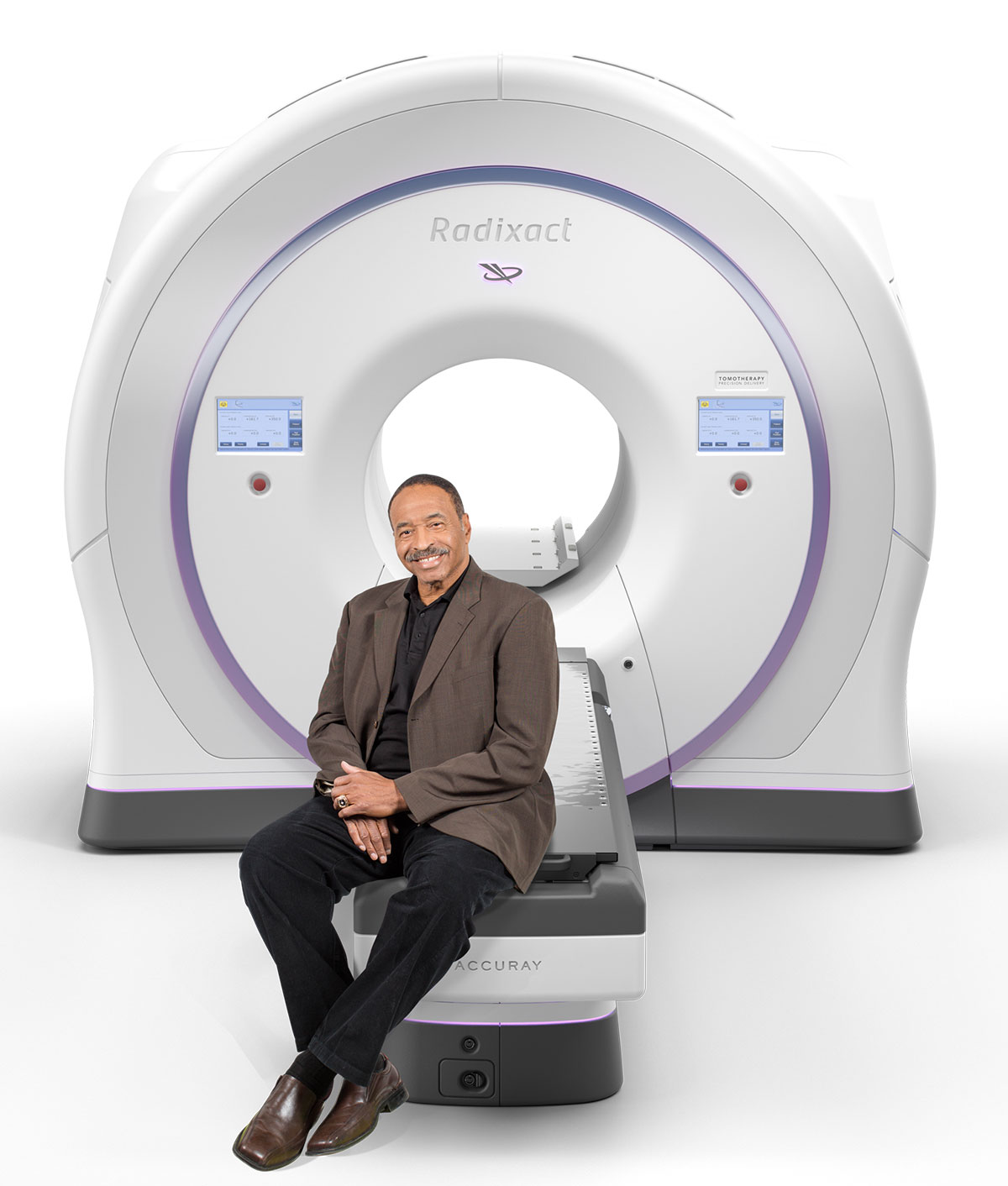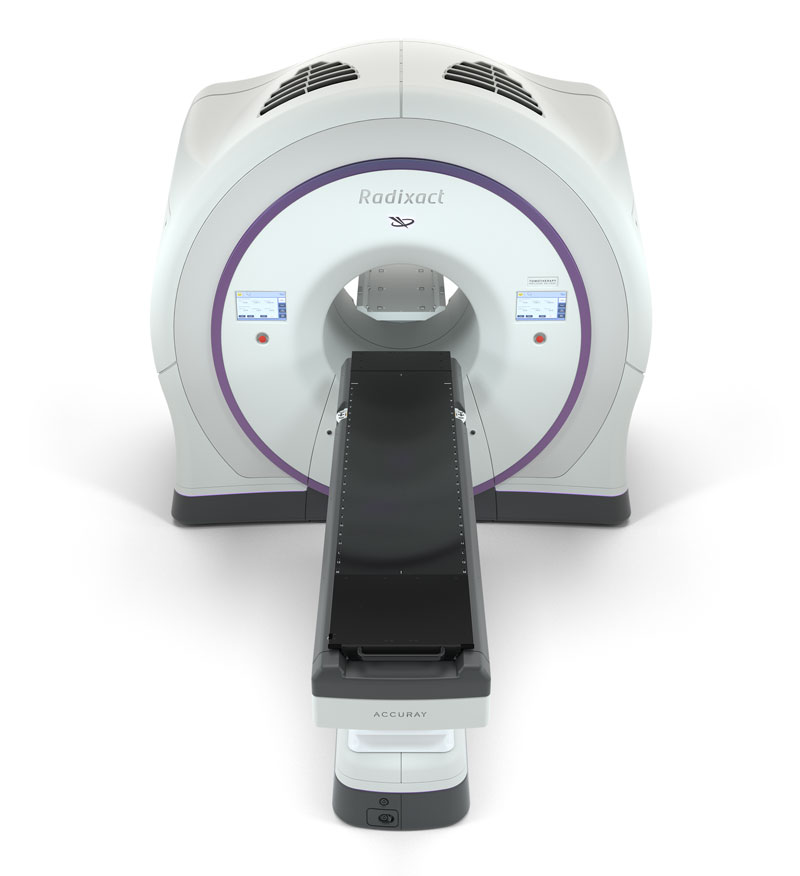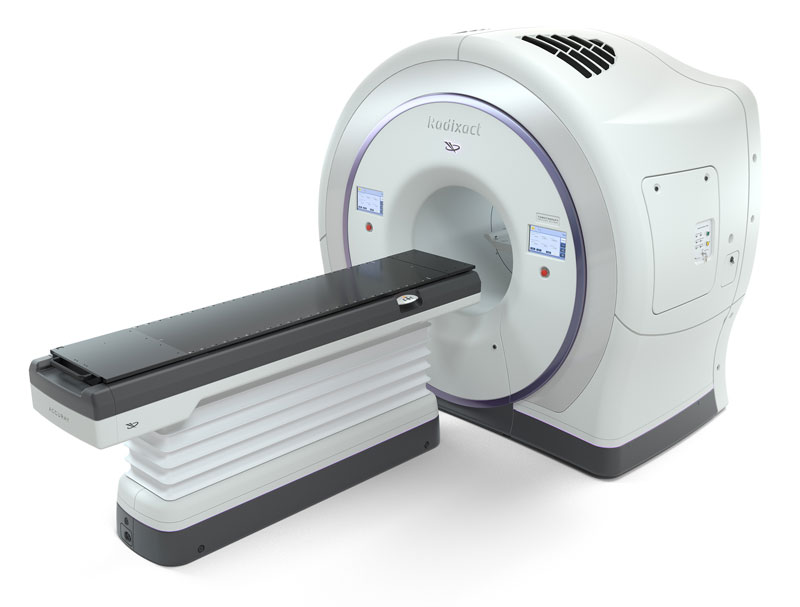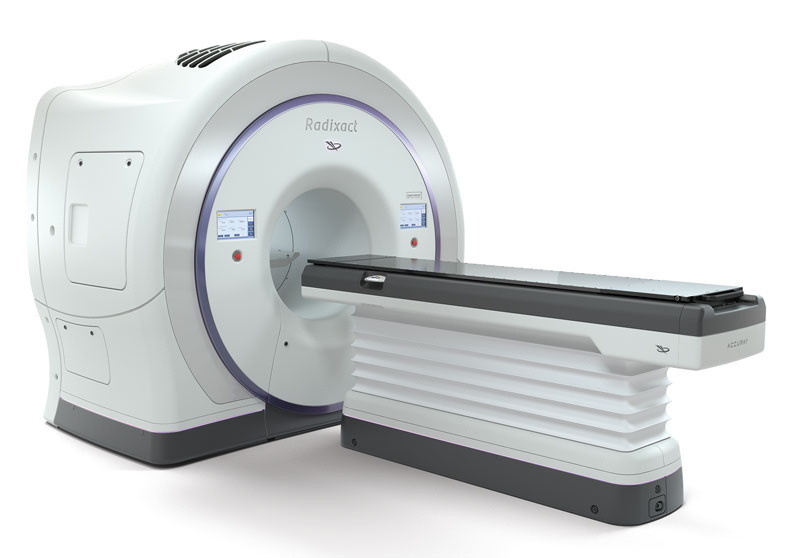Ask a physician if Radixact treatment is right for you
You deserve the best possible treatment for your cancer. Find a physician in your area offering the Radixact System — and find out if Radixact treatment is right for you.
Head and neck cancers can affect your ability to communicate and eat, cause pain, and negatively impact your emotional well-being. That’s why when it comes to treating the complex, delicate and vital tissues and structures of the head and neck, precision matters. The Radixact® System provides a non-surgical option designed to maximize the radiation delivered to the cancerous tumor while minimizing dose to healthy tissues, such as those in the brain, spinal cord, salivary and parotid glands — protecting related functions and preserving your quality of life. The system can be used to treat the entire spectrum of head and neck tumors, and may provide an effective alternative when surgery is not possible or when the tumor cannot be entirely removed, or to reduce the risk of higher toxicities associated with the use of conventional radiation therapy.
The Radixact System, the next-generation TomoTherapy® platform, has been designed to enable doctors to more effectively and efficiently deliver precise radiation treatments to more patients. The TomoTherapy platform represented a dramatic advance in the radiation oncology field, as the only system specifically designed for integrated 3D daily image-guidance with intensity modulated radiation therapy (IG-IMRT) that will help you fight your cancer.

You deserve the best possible treatment for your cancer. Find a physician in your area offering the Radixact System — and find out if Radixact treatment is right for you.
Clinically Proven Outcomes
A Non-Surgical Option
Enabling Re-Treatment
Radixact vs. Traditional Treatments
The Radixact System, the next-generation TomoTherapy platform, is one of the most integrated, advanced systems for comprehensive cancer treatment available today and is routinely used to treat the entire spectrum of head and neck cancers — including the most complex cases. The TomoTherapy technology studies found:

Surgery is a common treatment for head and neck cancers, but there are many cases where it may not be possible — or simply may not be the best option available. Similarly, conventional intensity-modulated radiation therapy (IMRT) techniques are commonly used but they have demonstrated higher toxicity than the TomoTherapy treatments. Image-guided intensity-modulated radiation therapy (IG-IMRT) with the Radixact System, the next-generationTomoTherapy platform, can offer an effective alternative in many cases, delivering precision in a non-invasive, outpatient procedure that does not require incisions or general anesthesia. Most patients will not require hospitalization or a long recovery period.

Because the precise targeting of the Radixact System significantly reduces irradiation of surrounding healthy tissues, the Radixact System can be a powerful treatment option for head and neck patients, including patients that have previously undergone radiation or surgical procedures, or experience a recurrence.

The Radixact System with TomoTherapy® technology maximizes radiation delivered to the target — while helping to minimize dose to surrounding healthy tissues. The result is highly personalized treatment designed to significantly reduce the risk of the side effects that too often disrupt the lives of patients during and after treatment.

Radixact treatment is an outpatient procedure that does not require incisions or general anesthesia. Most patients will not require hospitalization or long recovery period.
Radixact treatment eliminates the inconvenience and risk associated with radioactive seed implants or catheter.
The radiation beams are shaped to closely fit the area of the cancer, helping to deliver precise treatments and significantly reduced doses of radiation outside the tumor, leading to better acute salivary function5
References:
1 Leung et al. “Treatment of nasopharyngeal carcinoma by TomoTherapy: five-year experience.” Radiation Oncology. 2013;8:107.
2 Bibault JE et al. “Clinical Outcomes of Several IMRT Techniques for Patients With Head and Neck Cancer: A Propensity Score-Weighted Analysis. Int J Radiat Oncol Biol Phys.” 2017 Nov 15;99(4):929-937.
3 Van Gestel D., et al. “RapidArc, SmartArc and TomoHD compared with classical step and shoot and sliding window intensity modulated radiotherapy in an oropharyngeal cancer treatment plan comparison.” Radiation Oncology 2013;8:37.
4 Chen et al. Intensity-modulated radiotherapy for nasopharyngeal carcinoma: improvement of the therapeutic ratio with helical tomotherapy vs. segmental multileaf collimator-based techniques. The British Journal of Radiology 2012;85:e537-543.
5 Bibault JE et al. “Clinical Outcomes of Several IMRT Techniques for Patients With Head and Neck Cancer: A Propensity Score-Weighted Analysis. Int J Radiat Oncol Biol Phys.” 2017 Nov 15;99(4):929-937.
© 2024 Accuray Incorporated. All rights reserved.
Educating others about your experience with the Radixact® or TomoTherapy® System can help others who face similar decisions about their own cancer treatment choices.
If you are interested in sharing your story, please fill out the form below and an Accuray representative will contact you.